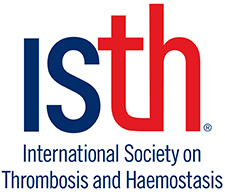ISTH Releases Evidence-Based Clinical Practice Guideline for Hemophilia Treatment
CHAPEL HILL, N.C., June 21, 2024 /PRNewswire/ -- The International Society on Thrombosis and Haemostasis (ISTH), the leading international professional medical-scientific organization dedicated to advancing the understanding, prevention, diagnosis, and treatment of conditions related to thrombosis and hemostasis, has published the first clinical practice guideline utilizing strict GRADE methodology for the treatment of congenital hemophilia A and B.
Hemophilia, a rare bleeding disorder resulting from deficiencies in blood coagulation factors, affects hundreds of thousands individuals worldwide and demands intricate management strategies. As the first comprehensive guideline based on the Grading of Recommendations Assessment, Development, and Evaluation (GRADE) approach it provides a rigorous and structured decision-making framework for clinicians, healthcare professionals, patients and their caregivers.
The objective of this guideline is to offer a comprehensive overview of evidence in making informed treatment decisions. Developed over several years, the ISTH assembled a multidisciplinary panel comprising physicians and patient representatives with global representation, balanced to mitigate potential biases. This diverse panel prioritized key clinical questions and outcomes crucial for both clinicians and patients.
The recommendations underwent rigorous analyses, including public commentary, ensuring comprehensiveness, transparency and inclusivity.
The culmination of this endeavor is a set of 13 recommendations, addressing critical aspects of hemophilia A and B care. They are accompanied by extensive remarks providing additional context and guidance for interpretation and implementation.
Among these recommendations, strong endorsements advocate for prophylactic treatment over episodic interventions for severe and moderately severe hemophilia A and B, underscoring a paradigm shift in clinical practice.
Recognizing that hemophilia is a rare and complex disease that poses challenges for guideline development and implementation, the new guideline contributes valuable insights into the evolving hemophilia treatment landscape. It illustrates and emphasizes the importance of patient involvement and shared decision-making in treatment decisions and advocates for individual and situational therapeutic choices. Moreover, the guideline addresses important gaps in scientific data and identifies critical research priorities.
"With hemophilia management being complex, our guideline provides clarity, guiding treatment decisions with evidence-based insight, yet highlighting the importance of making treatment decisions consistent with patients' individual risks, values, and preferences," stated Suely M. Rezende, M.D., Ph.D., Chair of the ISTH Hemophilia Guideline Panel. "Our collaborative effort has yielded a roadmap for optimizing patient care, setting a new standard in hemophilia treatment guidelines."
To provide important context, commentaries have been published alongside the guideline to provide further guidance on its interpretation and implementation. The commentaries, authored by preeminent experts also address challenges for clinical practice and policy, discuss strengths and limitations of the GRADE methodology for rare diseases, share how observational data can add highly valuable information in the absence of RCT data and comment on the pros and cons of the guideline.
Looking ahead as new and quality data becomes available in the dynamic and ever-evolving landscape of new hemophilia treatments that offer unprecedented improvements in treatment choices for clinicians and patients, the ISTH remains committed to advancing hemophilia research and ultimately improving the lives of people with hemophilia.
Future updates to the guideline are expected to encompass emerging treatments such as novel high-sustained Factor VIII as well as new non-factor therapies and gene therapy. By continuously updating and complementing this guideline, the ISTH aims to drive innovation and enhance outcomes for individuals living with hemophilia worldwide. Additionally, it will provide further opportunities for working and collaborating with stakeholders globally to ensure that the latest advancements and best clinical practice guidance is provided and effectively disseminated and implemented, ultimately benefiting innovation in the global hemophilia community.
For more information, to access the full guideline and read all three corresponding commentaries, please visit https://www.isth.org/page/hemophiliaguideline.
About the International Society on Thrombosis and Haemostasis (ISTH)
Founded in 1969, the ISTH is the leading worldwide not-for-profit organization dedicated to advancing the understanding, prevention, diagnosis, and treatment of conditions related to thrombosis and hemostasis. ISTH is an international medical-scientific professional membership organization with more than 7,000 clinicians, researchers, and educators working together to improve the lives of patients in more than 110 countries around the world. Among its highly regarded activities and initiatives are education and standardization programs, clinical and laboratory practice guidelines and guidance, research activities, meetings and congresses, peer-reviewed publications, expert committees, and World Thrombosis Day on 13 October. Visit ISTH online at www.isth.org.
Logo - https://mma.prnewswire.com/media/454627/ISTH_Logo.jpg
SOURCE International Society on Thrombosis and Haemostasis






Share this article